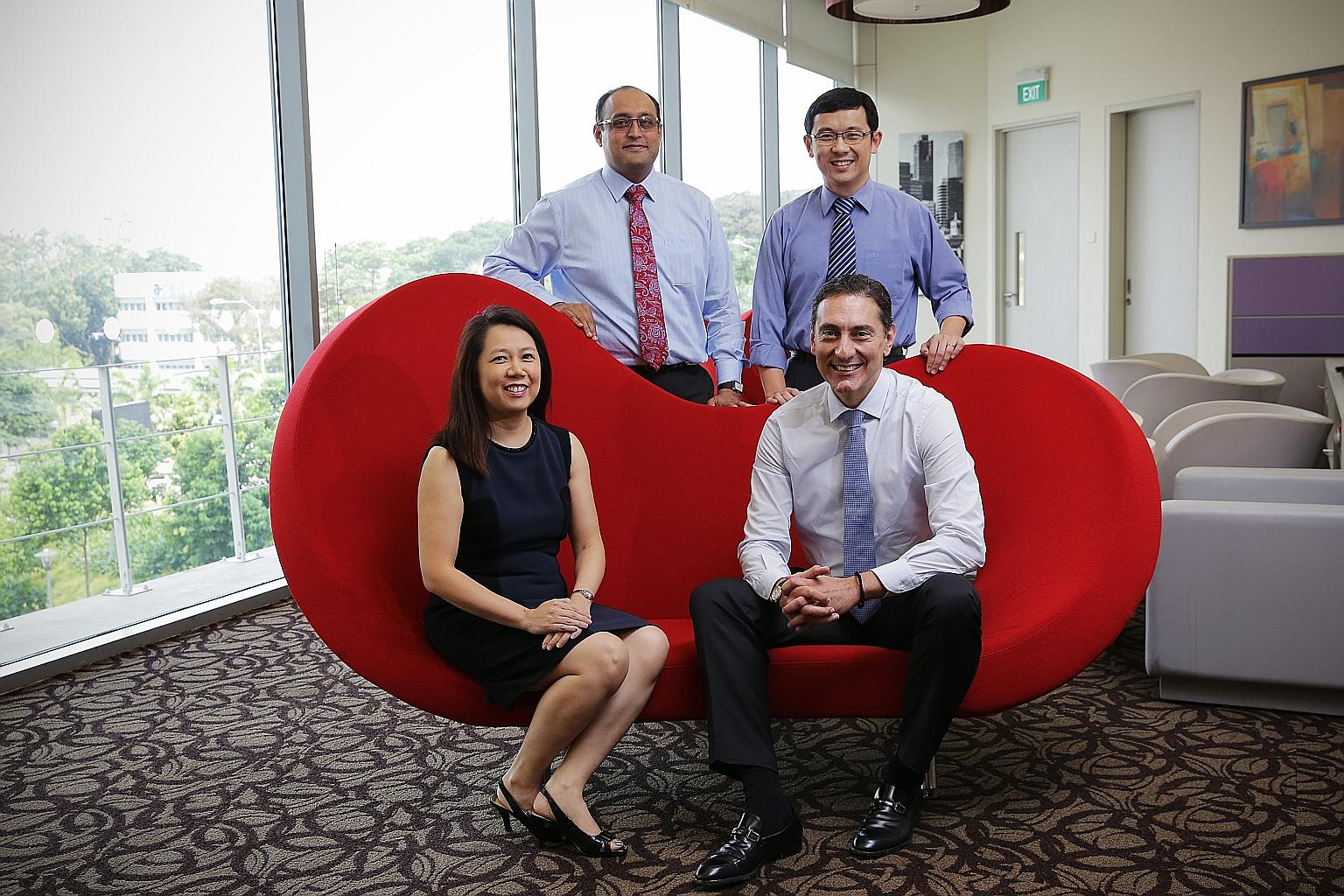Number of foreign doctors rising in Singapore public hospitals and polyclinics
Over 2,100 in public hospitals, polyclinics at end of last year; most are primary care docs
Sign up now: Get ST's newsletters delivered to your inbox

NUH doctors (clockwise from top left) Asim Shabbir, Koh Liang Piu, Theodoros Kofidis and Anita Lim are among medical professionals from overseas who have made Singapore their home. Dr Asim and Dr Koh, originally from India and Malaysia respectively, are both permanent residents, while Dr Kofidis and Dr Lim have become citizens.
ST PHOTO: YEO KAI WEN
Follow topic:
SINGAPORE - More than a quarter of the doctors in the public healthcare sector are foreigners.
At the end of last year, public hospitals and polyclinics had more than 2,100 foreign doctors in their employ, and the number continues to grow as Singapore faces a shortage of trained medical staff.
Most are primary care doctors with only 477 foreign specialists, a spokesman for the Singapore Medical Council (SMC) told The Straits Times.
In contrast, the private sector had only 156 doctors who were neither Singapore citizens nor permanent residents, according to the SMC's 2014 annual report.
To meet the demand for doctors, the Ministry of Health (MOH) has worked with the Education Ministry to raise the number of students accepted into medical schools here from 350 in 2012 to 460 this year.
MOH also tries to attract Singaporeans who are midway through their medical studies abroad to return to work here, by offering to pay up to $50,000 a year for their final three years of study.
In return, they need to work at a public hospital for three to four years, including their training year as housemen.
But a spokesman for MOH added: "Even as we grow the local supply of medical professionals, we will need to augment our local medical workforce with qualified medical professionals from abroad."
To ease them into the local environment, hospitals organise programmes to familiarise them with the local culture and behaviour as well as clinical practice. They also offer classes in local languages.
The MOH spokesman added that public institutions ensure a good mix of local and foreign staff in each shift and, in some cases, also provide interpreters to reduce any risk of miscommunication.
Among the public sector doctors who are Singaporeans or permanent residents, more than 1,800 were trained overseas.
Among them are the 615 who have taken up MOH's offer to sponsor part of the cost in their final years at a foreign university.
Said the spokesman: "The demand for healthcare services is expected to rise substantially with an ageing population, coupled with changing disease patterns arising from lifestyles and diets."
Dr Lee Chien Earn, chief executive officer of Changi General Hospital (CGH), said: "Even as we grow and train our local medical professionals, there may be areas to selectively fill unmet or critical shortages with suitably qualified doctors from abroad.
"Besides mandatory supervision by senior doctors, the hospital has put in place training programmes to fit them into our local clinical practice and our cultural context to enable them to practise competently."
Last year, CGH hired 35 new specialists, of whom eight were foreigners.
Many foreign doctors, after working here for several years, have come to like Singapore so much that they have become permanent residents or citizens.
Associate Professor Thoedoros Kofidis, a senior cardiothoracic surgeon at the National University Hospital, is originally from Greece. In Singapore since 2006 and a citizen since 2013, he said he identifies strongly with Singaporean values, especially meritocracy.
Before planting his roots here, he worked in Germany, Switzerland and the United States.
Dr Kofidis and his wife and daughter find it comfortable living here and have no problems making friends.
He also has a good rapport with patients, even those whom he needs a translator's help to communicate with.
He said: "When I can't communicate verbally, I do it with gestures. I try not to be 'sterile'."
His colleague Anita Lim, a senior rheumatologist who was born in Brunei and trained in Britain, said: "I've been here for a decade. It's become home.
"Becoming a citizen was a natural progression."

